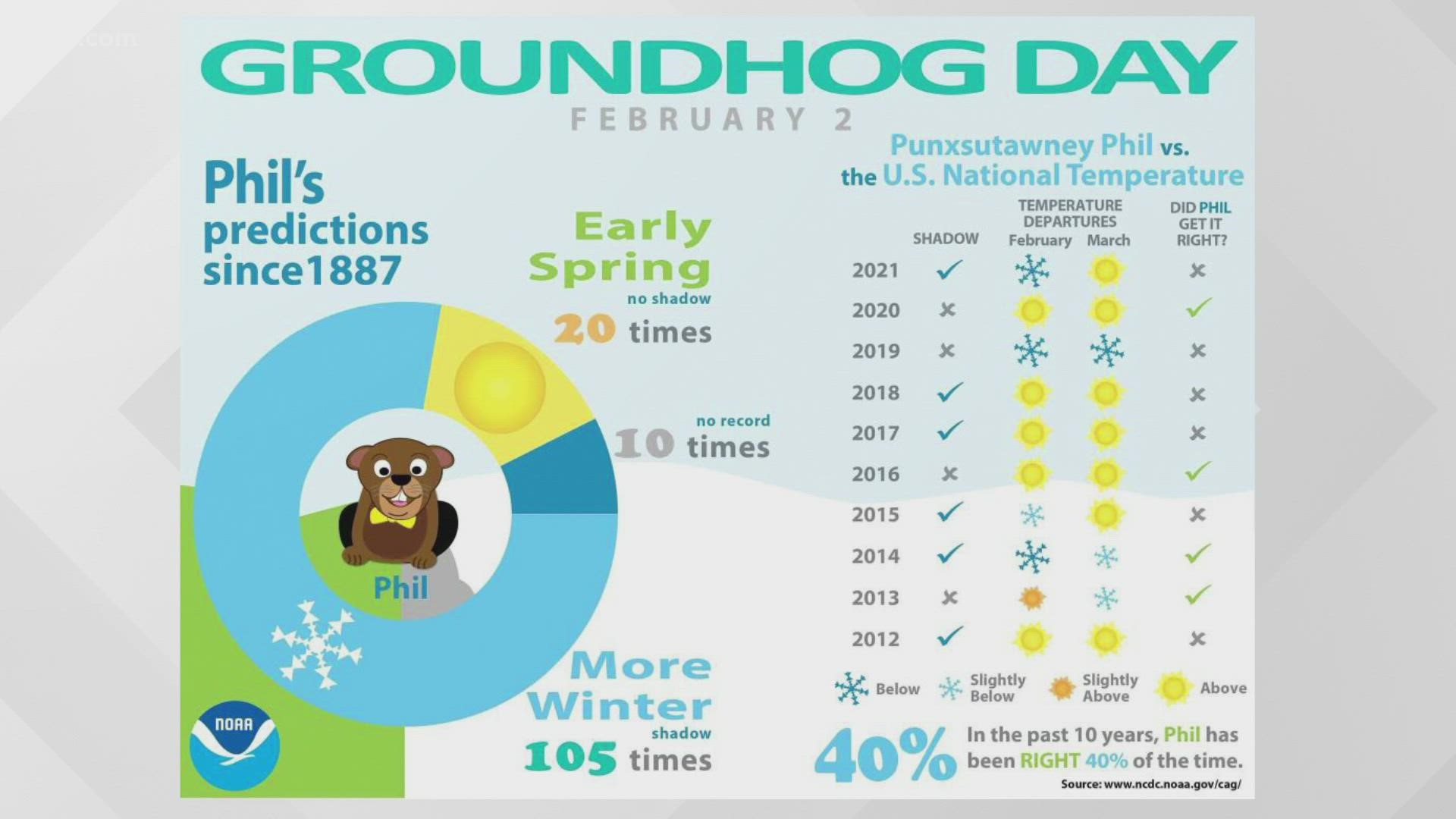PUNXSUTAWNEY, Pa. — Human meteorologists, step aside. It's Punxsutawney Phil's turn.
Just as he does every year, the world's most famous groundhog emerged early in the morning on Feb. 2 to predict whether there will be six more weeks of winter or if spring will come early.
This year, the fortune-telling groundhog saw his shadow, meaning another month and a half of winter before the spring comes.
The legend is simple. If he sees his shadow and retreats to his burrow, cold weather will persist into March. If he doesn’t see his shadow, spring will begin.
The annual event has its origin in a German legend about a furry rodent. Records dating to the late 1800s show Phil has predicted longer winters more than 100 times. Last year, Phil also predicted six more weeks of winter.
The forecast before that called for an early spring — however, Phil didn't say anything about a pandemic. The 2021 Groundhog Day event still went on, but because of the coronavirus pandemic, revelers weren’t able to see Phil and celebrate in person. Instead, it was all virtual and included cardboard cutouts to represent spectators.
2022's event is in-person, according to the Punxsutawney Chamber of Commerce, but tickets are sold out.
In the nearly 136-year history of Punxsutawney Phil, winter has been predicted more than 100 times, the club said. Ten years were lost because no records were kept.
Not sold on Phil's accuracy? Neither were a team of human researchers at a Canada university. Their 2021 study of more than 500 predictions by 33 groundhogs found that the furry "prognosticators" were correct just 50% of the time. Phil did only a little better at 52%.
Lead author Alex Ross told National Geographic that it was “wonderful” to work on such a lighthearted paper -- though the project did stem from "many conversations over many beers."

